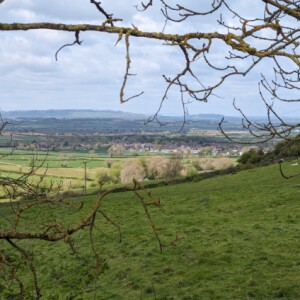Rolling Stone
A wind from due north, combined with a nice day, is something of a rarity. The wind was cold, of course, but the sun - when it appears - is now hot, in late April, and there was enough of it to make turning the pedals an attractive prospect. I like to ride out into the wind, then allow it to blow me home when knees and lungs are starting to feel the strain
A decent ride due north took me to the village of Hornton. This is a pretty, picturesque place at the heart of what are known as "the Ironstone Villages" - a term for which there is no formal definition, but generally means the villages west of Banbury, where most houses are built of the rich, digestive-biscuit coloured stone that is quarried locally. It is referred to variously as Marlstone, Banbury Ironstone or, most often, Hornton Stone. The first quarry here opened a thousand years ago and the last one closed only in 1942, when operations were moved to nearby Ratley.
Ratley sits at the very top of Edge Hill (and was the epicentre of the eponymous Civil War battle), overlooking the Cotswold scarp slope that rapidly drops 100 metres to the plain below, and a very different geology. The scarp, running south-west to north-east, therefore marks a firm boundary of the Ironstone Villages, though the boundaries in other directions are less clearly defined. My ride took me along the scarp, but it's difficult to get a satisfying photograph: the images have a foreground and a far distance, but the middle distance is concealed by the hill, and the effect is a lack of drama
I discovered only this evening that Hornton Stone has a prestigious devotee. According to the Banbury Guardian, at least, it was the favourite sculptural stone of Sir Henry Moore, at least for his more massive works. Sir Henry was famous for his reclining figures; I don't think he ever modelled a cyclist


Comments
Sign in or get an account to comment.


